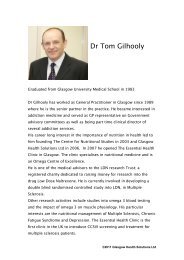ISNVD Abstract Book
ISNVD Abstract Book
ISNVD Abstract Book
Create successful ePaper yourself
Turn your PDF publications into a flip-book with our unique Google optimized e-Paper software.
SATURDAY – FEBRUARY 18, 2012 2:10pm-2:30pm<br />
Does thoracic pump influence cerebral venous return? (Erica Menegatti, ITALY)<br />
The effect of the respiratory pump on cerebral venous return is absolutely well established in human<br />
physiology. Even though this concept is accepted by everybody, the exact quantification of the effects of the<br />
respiratory pump on venous hemodynamics are still unknown. We assessed the hemodynamic effects induced<br />
by the thoracic pump in the intra- and extracranial veins of the cerebral venous system on 44 healthy<br />
volunteers (21 males, and 23 females; mean age was 27.5 5.0 years). Activation of the thoracic pump was<br />
standardized among subjects by setting the deep inspiration at 70% of individual vital capacity. Peak velocity<br />
(PV), time average velocity (TAV), vein area (VA), and flow quantification (Q) were assessed by means of echo<br />
color Doppler in supine posture. Deep respiration significantly increases PV, TAV, and Q, but it is limited to the<br />
extracranial veins. To the contrary, no significant hemodynamic changes were recorded at the level of the<br />
intracranial venous network. Moreover, at rest TAV in the jugular veins was significantly correlated with Q of the<br />
intracranial veins. We conclude that the modulation of the atmospheric pressure operated by the thoracic<br />
pump significantly modifies the hemodynamics of the jugular veins and of the reservoir of the neck and facial<br />
veins, with no effect on the vein network of the intracranial compartment.<br />
No financial disclosures to report.




